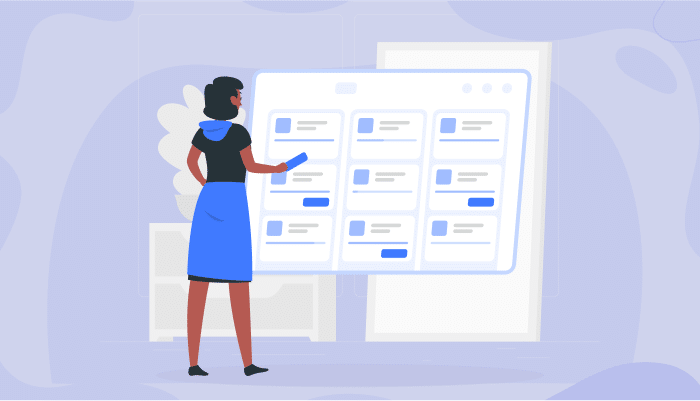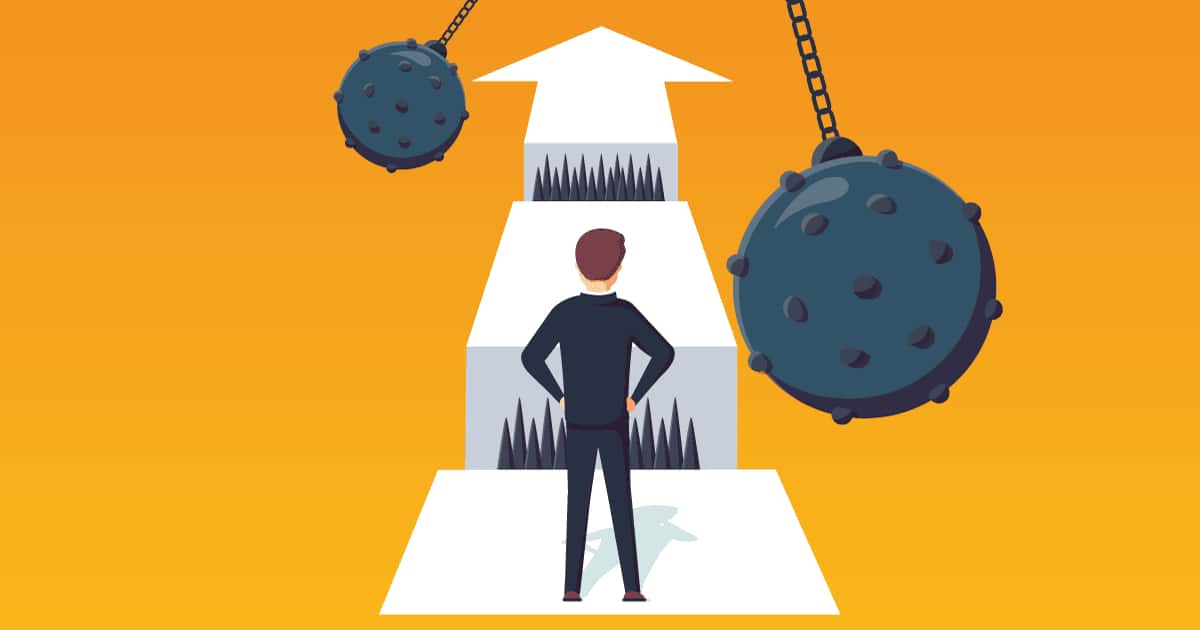The 3-3-3 Method is a simple yet effective productivity strategy designed for the workplace. This method helps employees improve their focus and manage time better by breaking tasks into manageable chunks. It increases efficiency by promoting clear and organized planning throughout the workday.
In the 3-3-3 Method, employees spend three hours focused on a single task, followed by three smaller tasks that take about an hour each. This technique reduces distractions and allows for a more structured work routine. Employees can maintain a consistent schedule while adapting to different work demands, leading to improved productivity and workplace satisfaction.
Implementing the 3-3-3 Method can lead to lasting changes in workplace habits, helping businesses achieve greater efficiency. By dividing tasks and setting clear goals, employees are better prepared to handle their workload. This approach not only enhances job performance but also contributes to personal development and overall growth.
Key Takeaways
- The 3-3-3 Method boosts work efficiency by dividing tasks.
- Structured planning helps maintain focus and consistency.
- This method supports adaptability and personal growth.
Understanding the 3-3-3 Method
The 3-3-3 Method emphasizes simplicity and intention in the workplace, helping individuals improve productivity and focus. This approach is widely discussed by Oliver Burkeman in his book Four Thousand Weeks: Time Management for Mortals.
Origins and Philosophy
The 3-3-3 Method originated from the need to handle overwhelming workloads more effectively. Oliver Burkeman, an author known for discussing productivity and time management, highlights this method in his book. He believes in focusing on fewer tasks to achieve deeper work and meaningful progress.
The philosophy centers on simplifying daily tasks. By consciously choosing three tasks to focus on each day, individuals can work with intention and reduce stress. This technique promotes quality over quantity, aiming to make each task meaningful.
Core Principles of the 3-3-3 Method
The core principles are based on having a clear and structured approach to daily tasks. The method involves:
- Three Important Tasks: Select the three most critical tasks to accomplish each day.
- Three Secondary Tasks: Identify three tasks that are important but secondary to the main tasks.
- Three Small Tasks: Choose three minor tasks that can be completed quickly.
This structure helps to prioritize work effectively and maintain a manageable workload. The approach encourages productivity by limiting focus to what’s essential, thereby enhancing the quality of work while avoiding burnout. By concentrating on fewer tasks, employees can perform better and achieve more meaningful results.
Implementing the 3-3-3 Method in Daily Work
The 3-3-3 Method helps structure your day, prioritize key tasks, and manage smaller, maintenance tasks efficiently.
Structuring Your Daily Routine
To start, break the day into blocks of time. Each block should be dedicated to specific tasks. For example, the first three hours can be for major tasks that need focus. The next three should handle intermediate tasks. The final block is for smaller or maintenance tasks.
Using a daily planner or digital calendar helps keep track. Setting alarms or reminders can prompt changes in activity, keeping tasks on time. This structure keeps the day organized and productive.

Prioritizing Tasks
List all the tasks you need to complete. Then, identify the three most important ones for the day. These should be the tasks that make the biggest impact on your goals. Focus on these during your first-time block when energy levels are high.
For the next three tasks, choose ones that support the primary tasks or are essential but less critical. The final set should be smaller, less urgent tasks. This approach ensures that priorities are clear, and vital tasks are accomplished.
Managing Smaller and Maintenance Tasks
Smaller and maintenance tasks are often overlooked but are necessary for smooth workflows. These include checking emails, updating documents, or organizing your workspace. Schedule these tasks in the final block of your day.
Using a checklist helps manage these tasks efficiently. This section of time allows the mind to relax a bit while still being productive. Keeping some flexibility here is also wise, as it accommodates any overrun from more significant tasks.
By following the 3-3-3 Method, daily routines become more focused, and tasks are handled in order of importance. The result is a more structured and productive workday.
Improving Focus and Concentration
Working environments pose many challenges to maintaining focus and concentration. By managing distractions effectively and using structured timing methods, one can significantly enhance their work performance.
Dealing with Distractions
Managing distractions is key to improving concentration. Common distractions include noisy environments, interruptions from colleagues, and frequent notifications from digital devices. To minimize these, create a quiet workspace whenever possible. Noise-canceling headphones can help reduce auditory distractions.
Digital distractions, such as notifications from social media or email, can be handled by turning off non-essential alerts during work periods. Setting specific times to check emails can also help.
Organizational tools like to-do lists or task management apps can keep one on track. Completing one task before moving to the next minimizes task-switching, which often breaks concentration.
Enhanced Focus Through Structured Timing
Structured timing methods, like the 3-3-3 method, improve focus by breaking work into intervals. This technique involves working for 3 focused sessions of 3 hours each, with short breaks in between.
Such structured timings help maintain deep work periods where interruptions are minimized, leading to better productivity. Each session should have clear, achievable goals to maintain motivation and direction.
Short breaks between sessions, roughly 15 minutes, allow the brain to rest and recharge. Activities like stretching, walking, or brief meditations during these breaks can enhance mental clarity. Structured timing trains the brain to focus intensely and then recover, which enhances overall work efficiency.
Time Management and the Art of Planning
Effectively managing time and planning can significantly enhance productivity in the workplace. Key elements include adapting to urgent tasks and intelligently spacing out work.
Adapting to Urgent Tasks
Handling urgent tasks efficiently requires prioritization. Highlight the most critical tasks and tackle them immediately. This prevents the buildup of pressing issues that can disrupt the workflow.
A useful technique is the Eisenhower Matrix, which categorizes tasks based on their urgency and importance. This helps in distinguishing tasks that need immediate attention from those that can be scheduled for later.
Team collaboration also improves when urgent tasks are clearly defined. It allows team members to understand their priorities and work together more effectively.
Spacing Out Work Intelligently
Spacing out work prevents burnout and maintains high-quality output. Break tasks into smaller sections and assign realistic deadlines for each part. This keeps the workload manageable and avoids last-minute rushes.
Using time blocks to schedule different kinds of tasks throughout the day can make the workday more productive. For example, dedicate specific hours for deep work and others for meetings or administrative duties.
Tools like online calendars or project management software can assist in scheduling and tracking progress. These tools ensure that tasks are spaced out effectively and deadlines are met.
The Role of Flexibility and Adaptability
In implementing the 3-3-3 Method in the workplace, flexibility and adaptability are critical. These elements ensure that the method can both manage routines effectively and accommodate personal needs.
Balancing Structure with Flexibility
Flexibility in the workplace doesn’t mean a lack of structure. The 3-3-3 Method requires a balancing routine with the ability to adjust. A structured routine helps employees stay focused and productive.
Flexibility allows for adjustments when unexpected tasks arise. This balance can lead to a more dynamic and responsive work environment. It ensures that while there are clear expectations, there is room to adapt as needed.
A flexible approach can also improve morale. Employees appreciate knowing that they have the freedom to manage their tasks in a way that suits their workflow best.
Adapting the Method to Personal Needs
Every employee has unique personal needs. Adapting the 3-3-3 Method to these needs can enhance effectiveness. Personalization is key.
Employees should be able to tailor their routines. This might mean adjusting work hours or workflows to fit individual preferences. Adapting the method isn’t just about productivity; it’s about ensuring that each employee feels valued.
Employers can support this by being open to communication. Regular check-ins and feedback sessions can help ensure that the method continues to meet everyone’s needs. Flexibility and adaptability, when balanced correctly, can make the workplace more inclusive and efficient.
Leveraging the 3-3-3 Method for Business Efficiency
The 3-3-3 Method is a structured approach to enhance business efficiency. It emphasizes prioritizing tasks, improving productivity, and achieving goals effectively. Below, explore its application in various business scenarios and examples of success from business leaders utilizing this method.
Application in Different Business Scenarios
The 3-3-3 Method can be adapted to several business settings, such as project management and team collaboration. In project management, it helps break down complex tasks into manageable segments, making it easier to meet deadlines. For team collaboration, it ensures that team members focus on their top three tasks daily, improving overall efficiency.
For instance, sales teams can use this method to prioritize client interactions, leading to better customer satisfaction and higher sales. In operations, it can streamline processes by focusing on three core areas each week, reducing bottlenecks and improving output. Its flexibility allows adaptation to various departmental needs, making it a versatile tool for boosting productivity in numerous business scenarios.
Case Studies: Business Leaders’ Success with 3-3-3
Several business leaders have successfully implemented the 3-3-3 Method to drive efficiency. One notable example is a tech startup where the CEO used this method to prioritize development goals. By focusing on three main features every week, the team was able to launch their product ahead of schedule and within budget.
In another case, a marketing executive employed the 3-3-3 Method to streamline campaign strategies. By identifying the top three action items each day, the team improved their campaign’s reach and engagement rates significantly. These success stories highlight how the 3-3-3 Method can lead to tangible improvements in business efficiency and productivity.
Productivity Techniques and Comparative Analysis
The 3-3-3 Method helps enhance workplace efficiency by dividing work into three tasks over three-hour periods for three days. This achieves a balance of focused effort and manageable workloads.
Comparison with Other Productivity Techniques
The 3-3-3 Method is often compared to the Pomodoro Technique. The Pomodoro Technique involves 25 minutes of work followed by a 5-minute break. This can help maintain focus but may interrupt deep work sessions. In contrast, the 3-3-3 Method allows for longer, uninterrupted work periods, aiding in complex tasks.
Another popular method is the Eisenhower Matrix. This approach prioritizes tasks based on urgency and importance. While effective for organizing tasks, it lacks the structured time frame that the 3-3-3 Method provides, which can lead to better time management.
Integrating the 3-3-3 Method with Other Strategies
Combining the 3-3-3 Method with other productivity techniques can yield enhanced results. For instance, integrating elements of the Pomodoro Technique can break down the three-hour work periods into smaller intervals if needed. This hybrid approach can keep energy levels high while maintaining focus.
The Eisenhower Matrix can be used alongside the 3-3-3 Method to prioritize tasks within each three-hour slot. This ensures that the most critical tasks are addressed first, optimizing productivity. Implementing quality management systems, as suggested in some studies, can further support this integration by creating a structured, efficient work environment.
Maintaining Consistency and Routine
Building a predictable daily routine and sticking to it can help workers stay focused and fulfilled. Consistency in daily tasks and long-term goals leads to better productivity and a more positive work environment.
Crafting a Sustainable Daily Schedule
Creating a daily schedule that balances work tasks with breaks is crucial. Employees should focus on setting clear start and end times for their work. This promotes a structured environment where tasks are completed systematically.
Planning should include designated break times, which help refresh the mind and body. Incorporating regular activities like checking emails, attending meetings, and working on specific projects ensures a balanced workload. Organizing tasks in blocks of time can make them more manageable.
Consistency in a daily routine helps prevent burnout and promotes mental clarity. Workers are more likely to feel fulfilled when they know what to expect each day.
Long-term Benefits of Consistency
Maintaining a consistent routine in the workplace brings several long-term benefits. It can increase overall productivity by reducing the time wasted due to disorganization. Employees who follow a stable routine tend to produce higher-quality work because they are focused and less stressed.
Consistency also builds a dependable workforce, with employees meeting their goals and deadlines regularly. This reliability can improve the overall morale and collaboration within the team.
A predictable schedule allows employees to better manage their time, leading to a better work-life balance. This balance is essential for long-term fulfillment and job satisfaction.
Personal Development and Self-Care
Balancing work and personal life is crucial for overall well-being. Self-care practices help manage stress and improve life quality, making them essential for a healthy work-life balance.
The Influence of Work on Personal Life
Work can have a significant impact on personal life. Long hours and high stress can lead to burnout and decreased happiness. It’s important to establish boundaries between work and personal time.
Many people struggle with work-life balance, leading to issues like fatigue and anxiety. Setting realistic goals at work and prioritizing tasks can help manage stress. Engaging in hobbies and activities outside of work can also improve overall well-being.
Self-Care Practices for the Work Environment
Incorporating self-care into the work environment is vital. Regular breaks, a comfortable workspace, and healthy snacks can make a difference. Mindfulness exercises, such as deep breathing or short walks, can reduce stress.
Creating a positive work atmosphere can foster better mental health. Encouraging open communication and recognizing achievements help build a supportive environment. Stress-reduction programs can also be beneficial. These steps can enhance both personal development and productivity. For more detailed strategies, consider exploring specific self-care habits mentioned in resources like the NYONL Study and The Self-Care Habit book.
Learning and Growth through the 3-3-3 Approach
The 3-3-3 Method can significantly aid in workplace learning and growth by incorporating structured learning into daily routines and evolving practices for continuous improvement.
Incorporating Learning into the 3-3-3 Framework
In the 3-3-3 Method, employees focus on three goals for three months and review their progress every three weeks. Integrating learning into this framework ensures that knowledge acquisition becomes a part of regular tasks.
For example, employees might set a goal to complete a specific training module. Every three weeks, they review what they’ve learned and how it applies to their job. This approach builds a habit of continuous learning without overwhelming employees with too much information at once.
Evolving the Method for Continuous Improvement
Continuous improvement is vital for any workplace. The 3-3-3 Method helps by allowing periodic reviews of both goals and methods. These reviews enable teams to adapt and refine their growth strategies based on feedback and changing needs.
For instance, if a learning module didn’t deliver the expected results, the team can troubleshoot and adapt their approach in the next cycle. This ensures that the method itself evolves, fostering adaptability and sustained development. This adaptability makes sure that employees are always progressing and not stuck in outdated routines.



